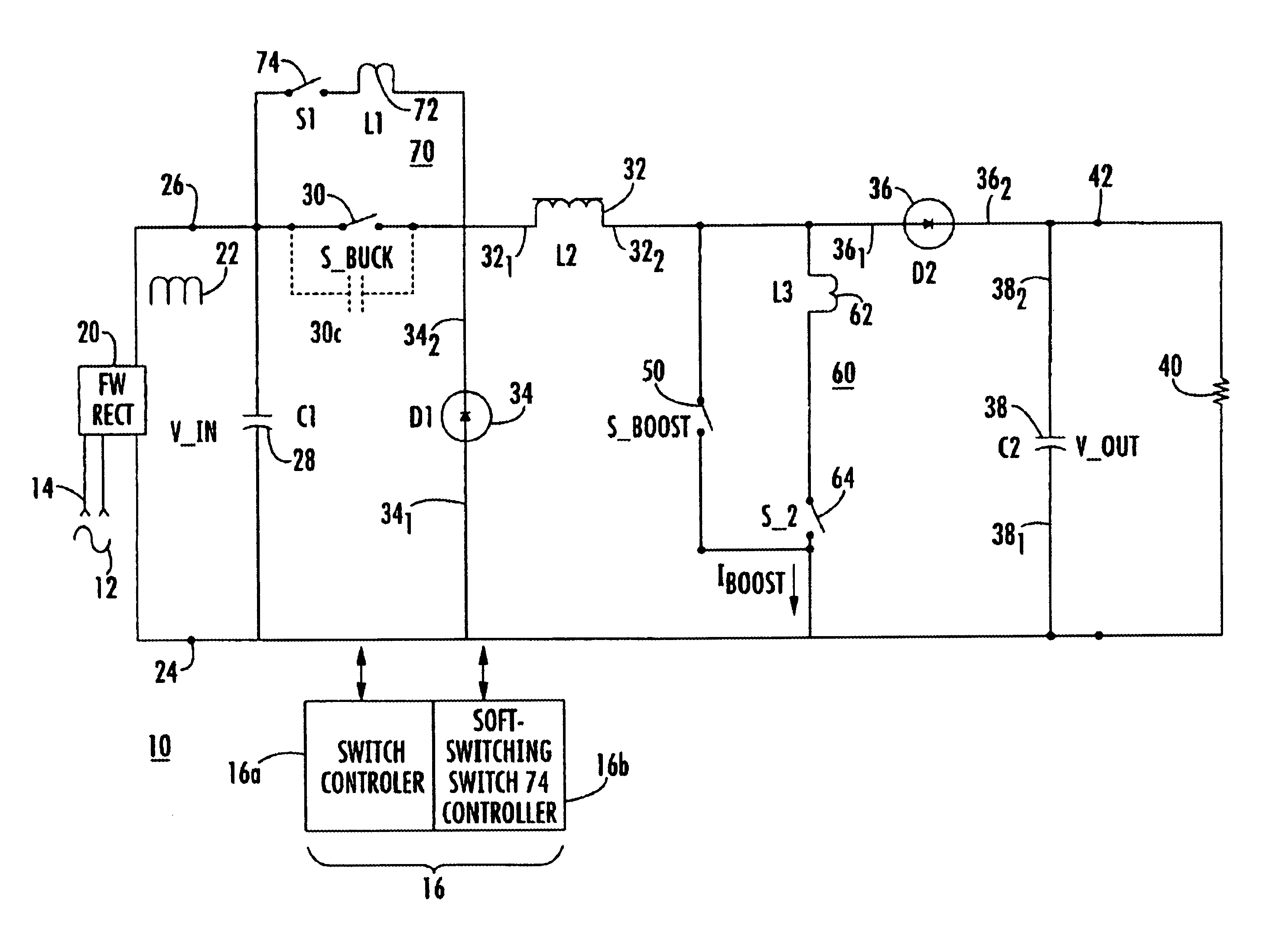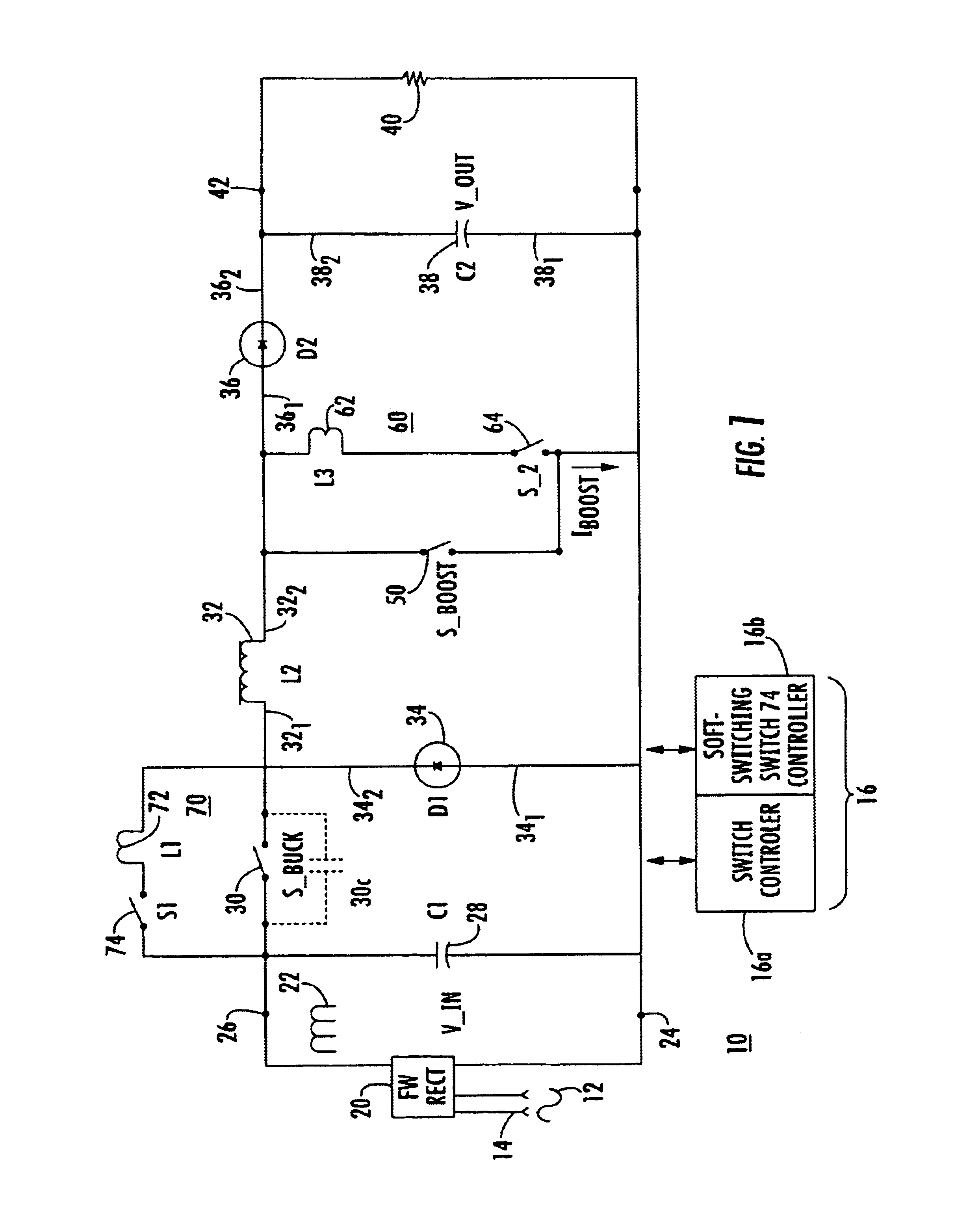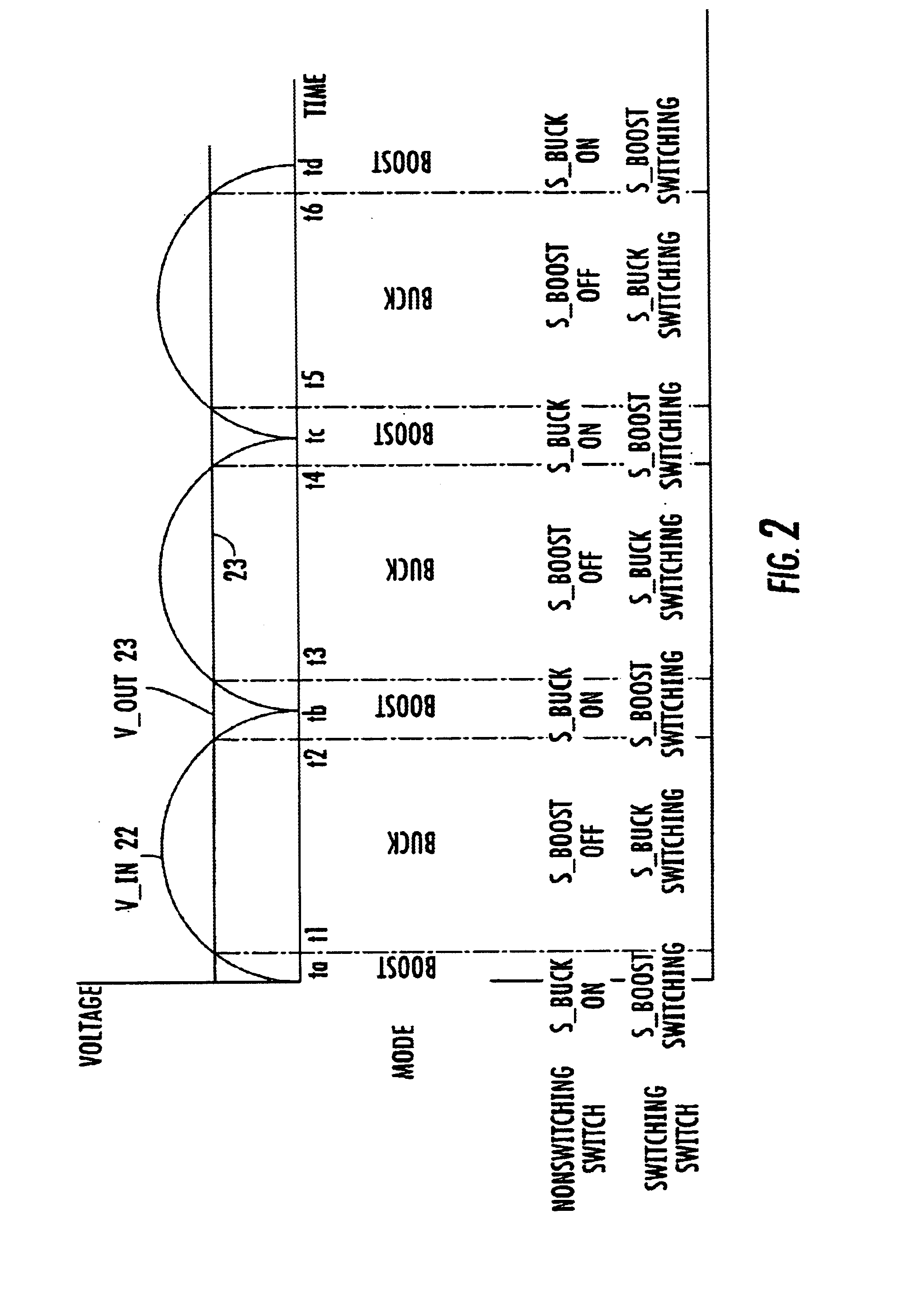Buck-boost power factory correction circuit
a technology of factory correction and power supply, which is applied in the direction of electric variable regulation, process and machine control, instruments, etc., can solve the problems of stressing the power transmission system, limiting the miniaturization of such power supplies, and large power drain from ac power lines or mains, so as to increase the energy stored in the first inductor
- Summary
- Abstract
- Description
- Claims
- Application Information
AI Technical Summary
Benefits of technology
Problems solved by technology
Method used
Image
Examples
Embodiment Construction
[0016]FIG. 1 is a simplified diagram in block and schematic form of a switching buck-boost power supply designated generally as 10, for operation from alternating power line mains voltage. In FIG. 1, the alternating power line mains voltage 12 is applied by way of terminals 14 to a full wave rectifier (FW Rect) 20. Rectifier 20 rectifies or “makes straight” the applied alternating mains voltage, to thereby produce the pulsating direct voltage (V_in) illustrated as 22 in FIG. 2. The pulsating direct voltage is produced “between” terminals 24 and 26, where terminal 24 is taken to be a reference terminal, which may be “ground.” Those skilled in the art know that the term “between” in electrical parlance is distinct from ordinary usage in a mechanical context, and relates to the ending points of the electric field lines associated with the voltage, and not to any physical position. The pulsating direct voltage 22 is slightly filtered by a capacitor (C1) 28, without changing the essence ...
PUM
 Login to View More
Login to View More Abstract
Description
Claims
Application Information
 Login to View More
Login to View More - R&D
- Intellectual Property
- Life Sciences
- Materials
- Tech Scout
- Unparalleled Data Quality
- Higher Quality Content
- 60% Fewer Hallucinations
Browse by: Latest US Patents, China's latest patents, Technical Efficacy Thesaurus, Application Domain, Technology Topic, Popular Technical Reports.
© 2025 PatSnap. All rights reserved.Legal|Privacy policy|Modern Slavery Act Transparency Statement|Sitemap|About US| Contact US: help@patsnap.com



